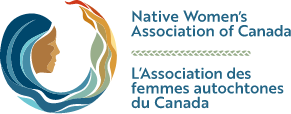Take one step to stop Indigenous genocide on Canada Day
"It’s time for all Canadians to acknowledge the truth. It’s time to stop the genocide." -- Lynne Giroulx, CEO Native Women's Association of Canada.
When the Missing and Murdered Indigenous Women and Girls (MMIWG) report was released in 2019 it caused a lot of turmoil and necessary uncomfortable discussion. That’s because it called the intentional killing of Indigenous peoples, genocide.
I was teaching a grade 10 careers class at the time. I usually started the class with a social justice or human rights issue that was featured in the news or popular music. We’d take ten minutes to discuss the issue, its impacts, and solutions.
Since it was National Indigenous History Month, I started the class with a discussion around the accuracy of using the term genocide in the MMIWG report. The heated discussions that could be found on the news and in newspapers seemed unending at the time.
One young woman became very angry and said her parents told her that it was cultural genocide, not flat-out genocide. It didn’t occur to her, or her parents, that destroying the culture of any people is in fact eradicating their existence.
The misuse of the term cultural genocide can be placed squarely on the shoulders of former Conservative Prime Minister Stephen Harper. It was Harper who limited the Truth and Reconciliation Commission to using the term cultural genocide.
That calculated choice of words was more palatable while simultaneously subverting the truth and facilitating the ongoing systemic violence against Indigenous peoples.
In situations like this I find that it’s always best to defer to an international body like the United Nations. While a student looked up the United Nations Convention of the Prevention and Punishment of the Crime of Genocide (CPPCG--December 9, 1948), I began writing the acts on the chalk board.
The CPPCP established the UN definition of genocide as:
Any of the following acts committed with intent to destroy, in whole or in part, a national, ethnical, racial or religious group, as such:
a. Killing members of the group
b. Causing serious bodily or mental harm to members of the group
c. Deliberately inflicting on the group conditions of life calculated to bring about its physical destruction in whole or in part
d. Imposing measures intended to prevent births within the group
e. Forcibly transferring children of the group to another group
By placing a check mark next to each act the Canadian government, its agents, or its policies perpetrated, it became crystal clear that Canada was five for five and had, in fact, committed genocide.
It’s also well established that the most efficient way to eradicate an inconvenient group is to target the women and children. The Native Women’s Association of Canada (NWAC) maintain that a genocide is being perpetuated against Indigenous people in Canada and that this was the unambiguous declaration of the National Inquiry into MMIWG.
“We know it’s difficult for some people to accept that genocide is not just a legacy of Canada’s colonial past, but an ongoing crime of massive proportions which continues to claim lives today,” said Lynne Groulx, NWAC CEO.
“This inability to accept the reality is a barrier that blocks efforts to end the violence,” she added.
In an effort to help settlers better understand how the Inquiry reached its finding, as well as to help them accept that this monumental crime is ongoing, NWAC launched Genocide in Canada: A Legal Explanation. The booklet, similar an easy-to-understand graphic novel, explains in plain language why actions against Indigenous people in Canada legally constitute a genocide. It then offers steps to end the genocide.
NWAC is calling on ministers of education in every province and territory to incorporate the material into high school curriculums in order to build a broad understanding of the issue as well as motivation to implement real solutions.
Unlike the Holocaust or the genocide of the Tutsis in Rwanda which involved mass killings over specific periods of time, colonial genocide is a much longer process.
“The policies of colonial destruction of Indigenous peoples took place insidiously and over decades. The acts of violence and intent to destroy are structural, systemic and cut across multiple administrations and political leads,” maintains Dr. Fannie Lafontaine, lawyer, professor, and co-author of the free downloadable booklet.
NWAC urges all Canadians to support this campaign by sending letters to various levels of government, and directors of education, requesting high school curriculums include teachings about the genocide. A template can be found on teachthegenocide.ca.
The website offers an overview of the genocide, its legacy, and its ongoing nature. Canadians can also request a free copy of Genocide in Canada: A Legal Explanation by Fannie LaFontaine and Chloloula.
“This is not a partisan issue, it’s not a political issue, nor is it an issue to be addressed solely by one level of government,” explained Lynne Groulx. “It’s time for all Canadians to acknowledge the truth. It’s time to stop the genocide.”


Thank you for explaining this important work!